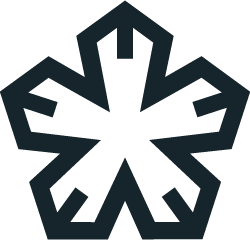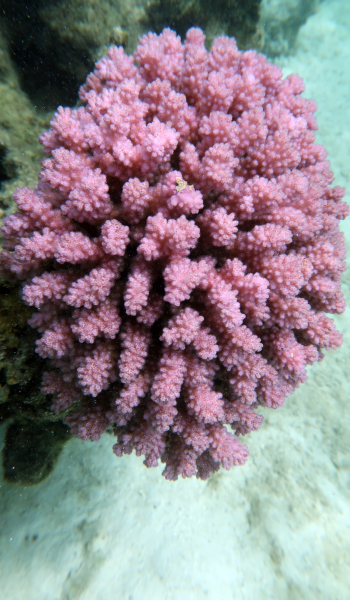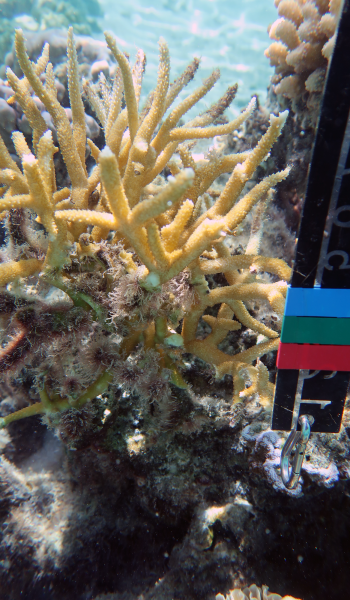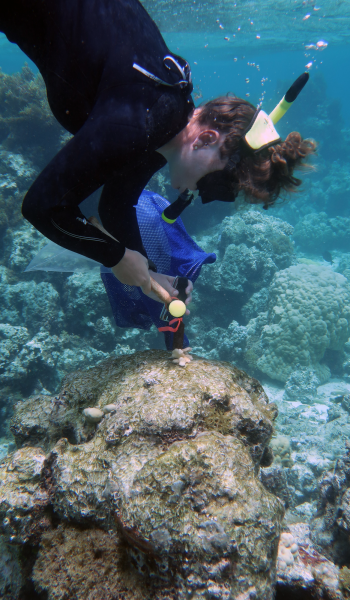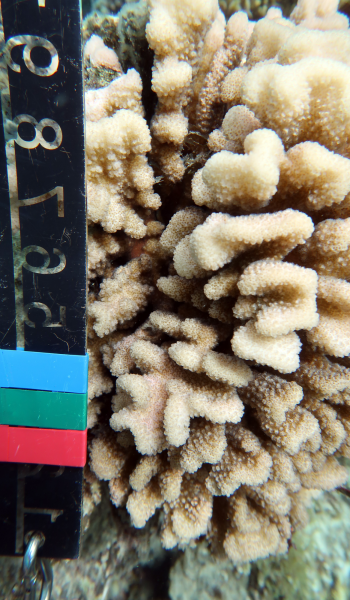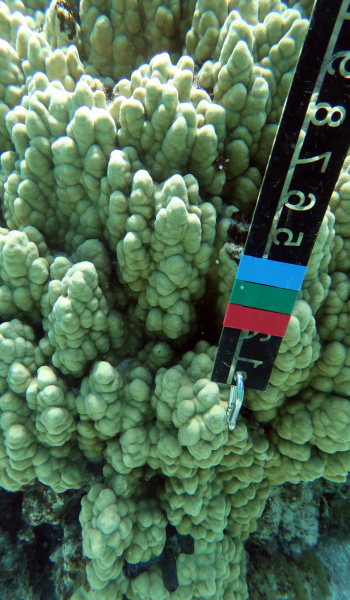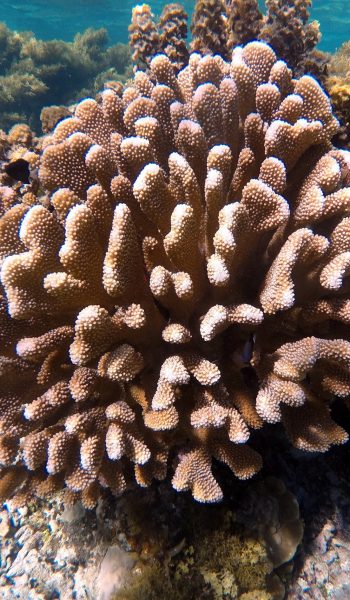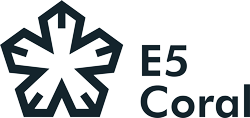Five months after the last sampling period, the team was headed back to Mo’orea for its third and longest expedition to date to finalize the first year of field sampling amidst the COVID-19 Pandemic.
OBJECTIVE
The major goal of the third E5 Coral expedition was to continue assessments of the environmental conditions and the coral colonies at our 3 field sites and collect valuable data for two more seasonal time points after a five-month hiatus due to the COVID-19 pandemic. Further, our team collected data on spawning for 3 Acroporid species and completed two additional projects focused on acclimation dynamics and intra-colony physiological and epigenetic variation.
Due to the pandemic, a new plan emerged with COVID-19 protocols and safety at the forefront of every team member’s mind. In August 2020, after careful consideration, travel was cleared to Mo’orea for three members of our team. Three members from Dr. Hollie Putnam’s team, Ph.D. student Dennis Conetta and Ph.D. Candidate Kevin Wong, arrived in Mo’orea to complete our September sampling on August 27th, 2020. The other team member, Ph.D. student Danielle Becker, arrived to assist with the final November sampling on September 19th, 2020.
TEAM
Danielle Becker (URI-GS), Dennis Conetta (URI-GS), and Kevin Wong (URI-GS)
DATE
August 2020 to November 2020
Teamwork makes the research dream work
in the midst of a pandemic in French Polynesia
Due to the pandemic, our team adjusted our sampling time points for the seasonal components. In the five-month hiatus from our previous sampling period, collaborative meetings continued over zoom and a new plan emerged with COVID-19 safety protocols in place.
With all the unknowns present in such an uncertain time, it was comforting to get back to the familiar underwater landscapes and pace of field-based research for our team. Once we were cleared from our second COVID-19 test administered to us upon arrival, we were ready to get to work and check on our reef sites. Dennis and Kevin assessed the three sites’ conditions and collected the environmental loggers that had now been out for five long months. During the September sampling period, Dennis and Kevin revisited and sampled all the E5 corals from each of the three sites.
In addition to completing the E5 sampling, they completed some exploratory sampling of massive Porites colonies. In this sampling, they took samples from the top, middle, and bottom of the colony in each cardinal direction. These collected fragments will help us to understand intracolony variation of the epigenome and phenotype.
In the middle of September, Kevin headed back to URI, while Danielle joined Dennis for the remainder of the field season. In mid-to-end of September, they continued to make headway on the numerous physiological and molecular lab analyses that needed to be completed for the September sampling. This included lab days focused on coral tissue extractions, quantification of endosymbiont densities, chlorophyll, total protein, and total antioxidant capacity assays, and molecular sampling (preservation of coral tissue in DNA/RNA shield). They shifted gears in the first week of October because coral spawning was about to begin! In collaboration with colleagues from the Centre de Recherches Insulaires et Observatoire de l’Environnement (CRIOBE) they collected 2 Acroporid species (Acropora pulchra and Acropora cytherea) from 3 sites to monitor and sample for molecular and physiological assays during the October spawning period.
For coral spawning, Dennis focused on collecting gamete characteristics like egg size, fecundity (or how many eggs released per adult tissue area), and fertilization rates of specific crosses of the sperm and eggs of colonies from the nursery and the wild sites. When enough colonies spawned with a decent amount of material, crosses were conducted and incubated in water baths at ambient and high temperatures to compare fertilization success. Independently the remaining gametes for each site (nursery or wild) were pooled and put into large conicals to raise into larvae. Similarly to the adult colonies, larvae underwent respiration trials at the same temperatures for both the nursery and wild settings. All of this data will help Dennis investigate if there are differences due to site and what that could mean for epigenetic inheritance, since most restoration programs use the method of coral gardening which uses fragments from wild colonies grown out in nurseries prior to outplanting them to sites of interest.
After the 2020 spawning, Dennis and Danielle completed the final E5 November sampling period which consisted of another round of 3 intense field sampling days. They photographed and sampled the previously tagged coral colonies from the 3 target species at all 3 sites for physiological and molecular assays.
In tandem with the October-November sampling period, Danielle also focused on a project that tracked the acclimation dynamics of 3 coral species across a high frequency of genotypes at the physiological and molecular levels. Her work will contribute to the mathematical modeling teams aims in understanding environmental and epigenetic memory that will be useful to help describe how epigenetic changes scale from impacting organism physiology, to affecting the survival of threatened coral species.
All in all, the team was able to achieve all goals safely and bring home samples for future analysis and processing thanks to strong teamwork, collaboration, organization, and planning. With all the hardships encountered this year, our team was grateful to be able to complete this research trip.
3
87
16
212
Sample collections, processing, and lab analyses.
With the help of colleagues from CRIOBE, all three field sites were visited in 3 consecutive days during the September 2020 and November 2020 sampling period, with previously tagged coral colonies photographed and sampled for physiological and molecular assays. All three species of coral (Acropora pulchra, Pocillopora spp., and Porites spp.) and one algal species (Turbinaria ornata) were sampled and all the environmental loggers were brought back to the lab at the Richard B. Gump South Pacific Research Station for data processing.

